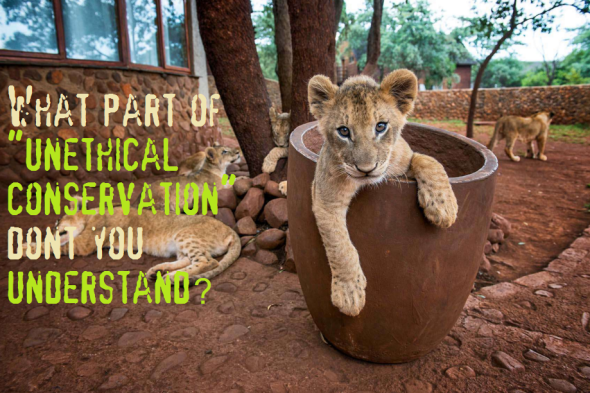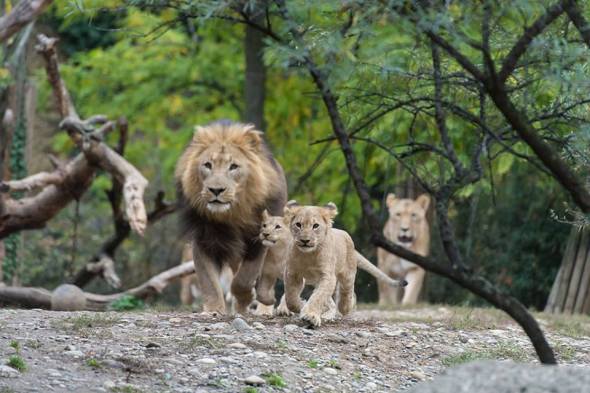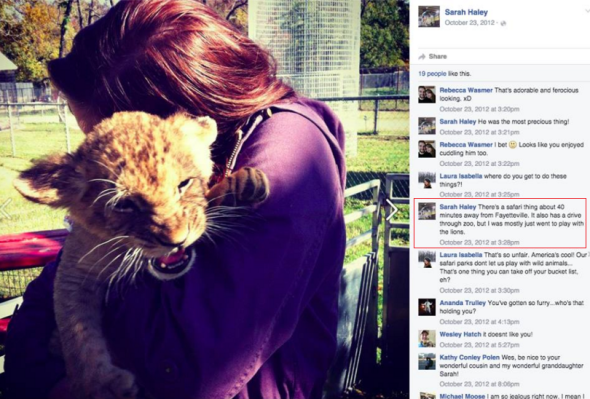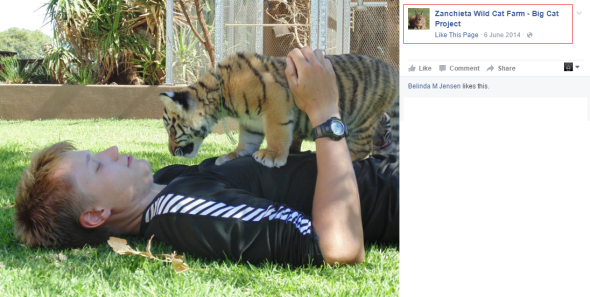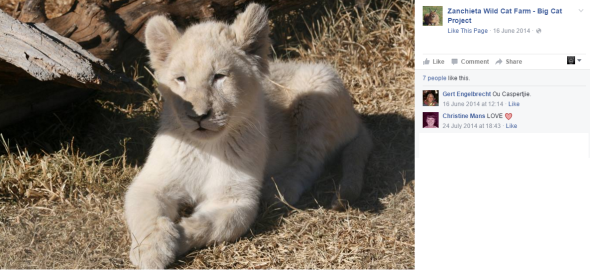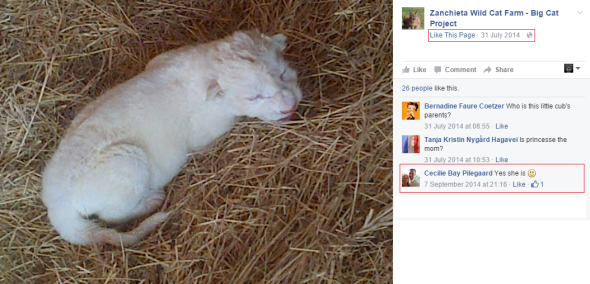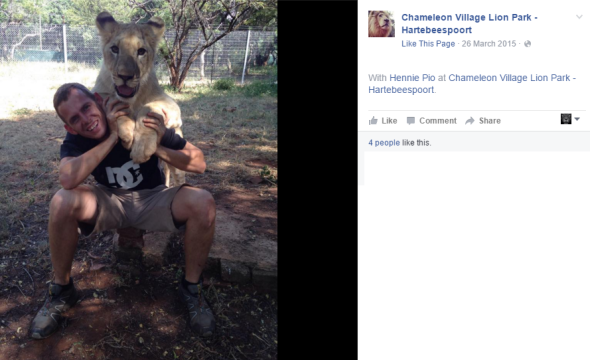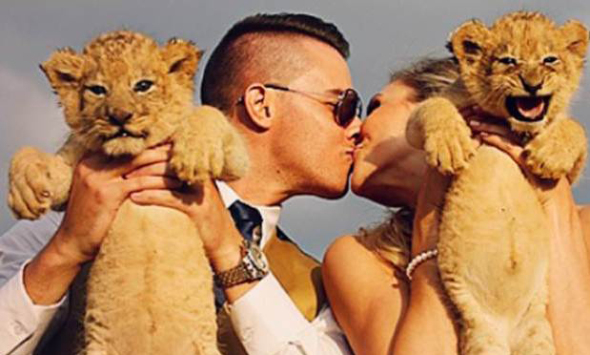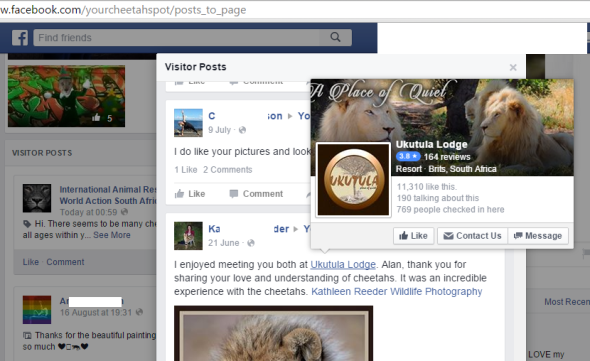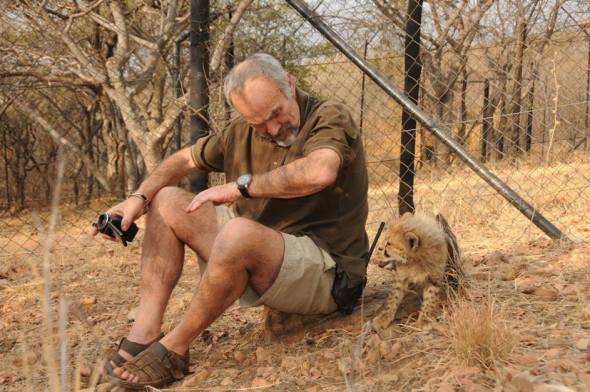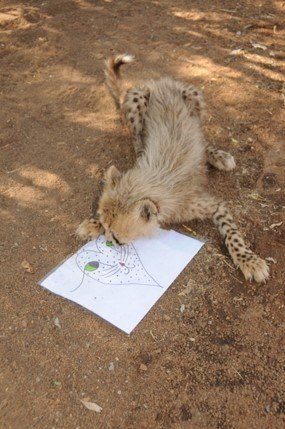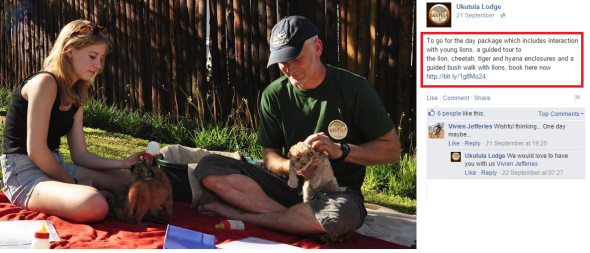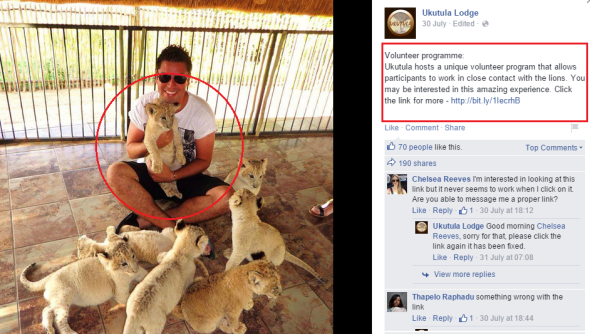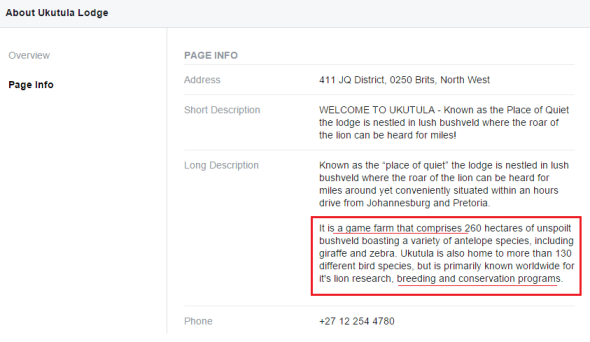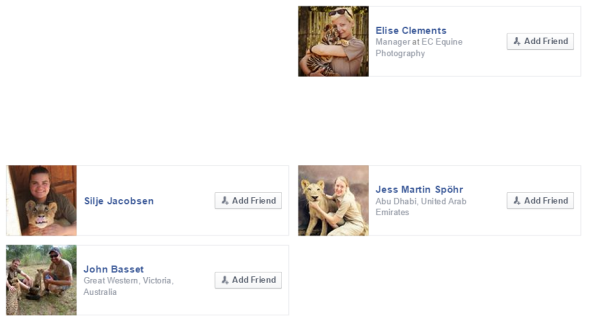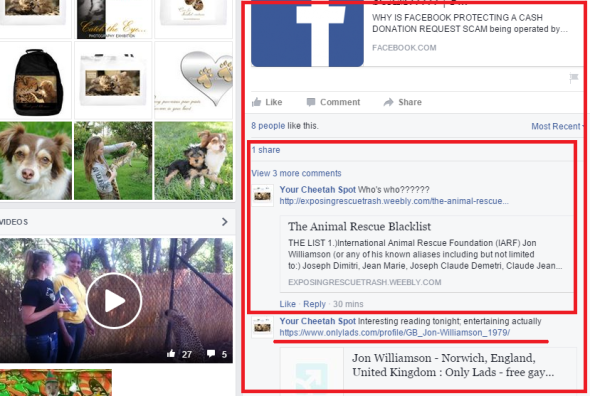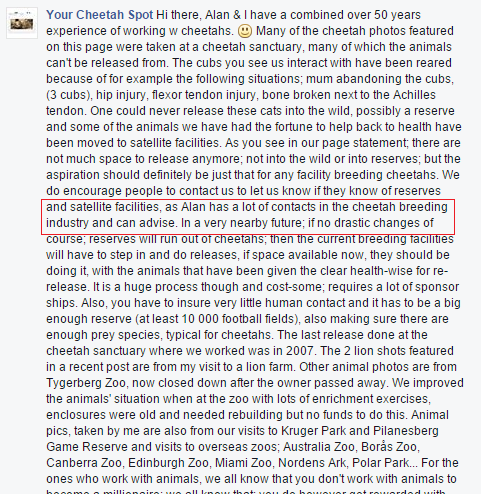What Part of Unethical Conservation Don’t You Understand? | Endangered Species Monday Special.
ETHICAL OR UNETHICAL
Last week we wrote an article in relation to the GoEco student/tourist travel firm, and the Zanchieta Wild Cat Farm. As usual we came under some pretty heavy criticism as apparently we were yet again in the wrong. Within many of the emails that we have received, students have literally blasted us for depicting themselves holding, petting or interacting with African predator cats, many of them cubs that seem to have no mother insight, and could be re-rehabilitated into the wild to boost wild predator populations up.
Back in 2015 from January to December we rolled out yet again another mass educational and awareness campaign aimed at mainly students and overseas tourists that paid up to $1,200USD for a two week visit to the many petting farms, lodges and resorts on the African continent, that was projected onto our main Facebook platform.
I.A.R.F.A’s educational and awareness campaign (2015) saw over 200 students give up this practice (one of many articles you can read here). Furthermore Zebula Golf and Spa Club that was hosting lion petting activities withdrew the practice, and removed adds from their main website. An African zoological garden removed its advertisement for cheetah petting, thus later ending their petting experiences, and finally a painter and artist that was promoting such activities eventually stopped.
The campaign also saw a decline in profit in relation to the Ukutula Game Lodge, and customer star rating, and less students visiting from 2014-2015. Amanzi Travel located within the United Kingdom have also allegedly withdrawn their lion petting advertisements focusing more on ethical conservation. (Amanzi Travel are still the focus of our attention though). The list goes on, and frankly we’re not going to stop until these practices are ceased immediately.
From 2014-2015 the organisation Blood Lions pounded the streets and cinemas (internationally) in relation too the petting and canned hunting industry which has seen quite a significant response from the petting and hunting fraternity too). In the wake of much controversy France has implemented an immediate ban on lion trophies being brought into the country. Now PHASA are at the throats of (Sapa, reported by Blood Lions) demanding the South African Predator Association immediately responds to the canned hunting problem that’s sparked fireworks around the globe. (See video below).
Unfortunately, despite the mass effort that we and others have placed into these projects, students, tourists, even trainee zoologists and veterinarians still thrash it out with us, believing that what they are participating in, is all good fun and doesn’t do the animal any harm whatsoever. Below are just a handful of the lame excuses that we read every week emailed to us in anger.
LAME RESPONSES FROM TOURISTS / PREDATOR PETTING
“None of these cubs were harmed and are all living a peaceful happy life”
“Your information is wrong, petting doesn’t harm the cubs, the cubs don’t have a mother, we’re helping them and their cuddly, so what!”
“Please research your information before posting my image, there is no hunting on this farm whatsoever, leave me alone”
“The image you posted of me misrepresents me, all I was doing was holding the cub for a Facebook photo avatar. I’m doing nothing wrong”.
“Lions are so cute, I can’t wait to go back again”
“They advertise release programs, and I participated in a release program within a fenced in area, none of the animals were harmed, or killed, what’s your problem?”
The above lines are just a handful of lame excuses that we read everyday from tourists, students, petting farms, and alleged predator rehabilitation sanctuaries. Furthermore no matter how much we try to explain, either in basic English or with science - the fact of the matter is this: Many students, tourists and sanctuaries fail to see the damage that they are doing, and contributing too.
Many of the students and tourists that we’ve highlighted as contributing too unethical conservation also scold us for using their images, stating that we’re misrepresenting them holding or petting a “predator cub”. So we’re going to try things a little differently. Back to basics. Below we’ve included a number of images, and under them images we’ve written a brief extract in relation to what’s wrong with each image/ real life scenario. However before we start, lets take a look at what real ethical conservation is within the “captive breeding and release industry”.
Image: Basel Zoological Gardens.
The image above was taken at Basel Zoological Gardens, and as you can see mother, father and three young cubs are happily strolling in the park on a fine late Spring day of (2015). There are no tourists, students or even the hint of petting, interaction, cuddling or manhandling on show here. Mother’s Oka and Uma gave birth to their cubs on May 28th, and June 15th (2015).
Many people may be asking, why are lions being bred and reared within a foreign non-African zoo? The answer to that is simple. Lions are listed as vulnerable (IUCN Red List population map), and while there may be many lions in countries such as South Africa where security is more tight. North and West African lions are practically extinct. Southern Africa is probably one of very few regions now on the African continent that holds more “larger populations”. Unfortunately within the past twenty years Africa has seen a staggering decrease of lion populations by over 30-50%. (See video below.)
Zoo Basel supports the Big Life Foundation, which works in the Amboseli-Tsavo ecosystem in Kenya to protect the Lions. The Zoo is also a participant in the EAZA Endangered Species Breeding Programme for African Lions. This means that every-single lion you see within a zoo that’s part of the EAZA Endangered Species Breeding Programme will eventually be released into the African wild, they’ll not be kept for photography purposes, or to interact with.
For release programme’s to be successful human interference must be kept to a bare minimal. You’ll not see any petting, interaction, man-handling or public photography exploitation going on here. EAZA’s Endangered Species Breeding Programme is what we refer to as “ethical conservation within captivity”, and there is much evidence in relation to EAZA’s working projects too.
UNETHICAL CONSERVATION PRACTICES
Below are prime examples of “unethical conservation practices”. From America too the continent of Africa you’ll not see EAZA’s Endangered Species Breeding Programme allowing this type of behavior. The reasons why you’ll not see such behavior played out within anyone of EAZA’s projects is listed below for your information in plain English.
GENERAL PETTING
Image: Sarah Haley lion petting United States
Back in 2012 Sarah Haley from Fayetteville, Arkansas, United States visited the Wild Wilderness Through Safari. Sarah’s reasons for visiting was quite simple. “I mostly went to play with the lions”. As one can see these lions are very young, and as normal there seems to be no mother or father in sight. What Sarah doesn’t realize is, the mother would have had her young ripped away from her at a young age, just so tourists and students can play petting.
Mother and cub[s] would have been left in quite an emotional state, suffering psychological trauma, and would have pined for one another. Its more or less the same behavior a new born baby and mother will play out when separation occurs. Did it make you feel good Sarah knowing that you was holding a pining mothers cub that simply wanted to behave like any normal human or animal mother?
There doesn’t appear to be any-form of breeding programme in operation at this alleged zoo either. Furthermore this cat will never be released into the wild, because all of its natural instincts have been removed by the human, and imprinted from the human onto the cub. Yet on the African continent we’ve lost over 50% of our lion populations. There doesn’t seem to be any form of hunting advertised, however we are somewhat suspicious here as to why so many cubs are being reared at this zoo, and what the so called zoo’s actual intentions are.
MISHANDLING
Image: Unidentified male at the Zanchieta Wild Cat Farm
Every month we bring into question many safaris, big cat projects, lodges and zoos. Many of them do not participate in hunting, while others are more than “questionable in relation to their mission statement and hunting”, and what they are actually projecting into the public domain (which most of the time doesn’t support their mission statement).
Furthermore contradictions from the owners in regards to their companies mission statement are rampant among such alleged rehab and non-breeding facilities. The image above seems pretty innocent, and quite adorable to most. The image was posted onto the Zanchieta Wild Cat Farm Facebook page of which the Zanchieta Wild Cat Farm has venomously protected as innocent.
Zanchieta have even gone to great lengths in the past week basically stating that were totally wrong, and everything that we’ve located in relation to their company (above and below) is more than legitimate. An insult that we did read stated: “We (Zanchieta Wild Cat Farm) know that this post by I.A.R.F. was done with good intentions, from people who, like us, love animals and fight for their rights”. We do indeed love animals hence why this article is proving wrongdoing and unethical conservation practices. I.A.R.F.A do not under any circumstances support such activities nor will we promote them either. (Please continue reading).
What the young unidentified male seems to be forgetting is that this young cub “may” have been removed from his/her mother at the prime milking age of three weeks old. PAAZAB’s Husbandry and Veterinary Guide states: The cub should also be supported under its bottom with the other hand, cubs must be supported correctly as to not injure the young developing cub. Further to this we all know that cubs aren’t exactly hygienic like their adult mothers and fathers. Regardless of how much Zanchieta Wild Cat Farm defends themselves, the images projected onto their Facebook page are clear signs of “exhibiting to profit from money”. The worst is to come.
Cubs this age want roam, explore, test their young muscles to develop coordination, and sleep for extended periods of time without interruption. They dislike being handled. While Zanchieta Wild Cat Farm states that they protect, rescue and rehabilitate, this behavior is neither protecting the cub, or (at the least) trying to rehabilitate this young cub into the Asiatic wild where the number of tigers are about 3,200 if that remaining in the wild.
Zanchieta Wild Cat Farm also hosts a number of lions identified as the (Timbavati white lions). This area of alleged predator conservation has been a great focus of concern to us, Timbavati white lions are practically extinct. There is said to be more white lions in captivity than in the wild. Meanwhile within the wild there is alleged to be no fewer than 13-20 individuals if that. So why is this predator rehab farm and rescue not helping to support white wild populations with captive breeding programmes? (See video below)
The owner of Zanchieta states via her website “I have never and never will breed or raise any BIG CAT at Zanchieta for onward selling to a third party. Our white lion pride has grown from the original male and female pair to five lions and these lions will never leave Zanchieta”. We believe this statement was written back in 2010 when the main domain and site was formed and registered.
NO THREATENED SPECIES RELEASE PROJECTS
Image: Timbavati white lion cub 2014.
Image: Timbavati white lion cub (new born) 2014.
The Zanchieta owner states: “No further natural breeding will occur as the females are on contraception programs. Our two male brown lions and our brown lioness were purchased as cubs and have never been allowed to breed. They too will never leave Zanchieta.” That statement has been on the main Zanchieta website since 2010, yet the lady is not prepared to release these lions into the wild via ethical conservation projects. Timbavati white lions are as explained (critically endangered), so this statement is very questionable.
Again where is the mother, but more importantly why is Zanchieta stating that none of her lions will be allowed to leave the farm? That’s a classical sign of unethical conservation for reasons that we do not fully understand. This lion as one can see (above) is only a few days old. Furthermore as the owner states none of the lions will be allowed to leave the farm.
If you are familiar with the sub-species of the Panthera leo krugeri, you’ll also know that their populations within the wild are dwindling. So theoretically any good “rescue and rehabilitation project” that states they’re not breeding (when they clearly are), would try to improve Panthera leo krugeri populations within the wild like EAZA’s Endangered Species Breeding Programme. So in our (expert opinion), this farm is nothing more than a breeding and captive facility. Indeed there are some release projects ongoing however as the owner states (no lions leave).
So instead students, tourists and volunteers can all help contribute to (nothing). That in our opinion is a complete waste of money, money that could be spent elsewhere on actual breeding and release projects to sustain threatened populations of predators.
ANIMAL ATTACKS
Image: Chameleon Village Lion Park
Whenever we explain to tourists and students about the petting and interaction industry, they’ll often absorb only a certain amount of information (in most cases), which is why education needs to focus more on every aspect of this industry rather than just hunting. Many Non-Governmental Organisations, and “anti hunting groups” out there, will categorically state on locating a petting/breeding farm, that hunting is the major player regarding their find. Most of the farms, lodges and sanctuaries that we’ve located aren’t actually connected to hunting whatsoever.
So when a tourist or student hears them words I.e. hunting is not ongoing, they automatically believe that all is okay, we’ve got our wires crossed, and we’re simply trying to tar the name of a farm or lodge. International Animal Rescue Foundation Africa researchers every single piece of detail on all industries and practices that we do not support practicing unethical conservation. That includes petting, disease, hunting, abuse, exploitation, and failure to keep to promises (I.e): release programmes, or helping increase threatened species in the wild.
Meet Mr Hennie Pio from South Africa. The image above looks very innocent again, and both the visitor and lioness seem pretty much laid back. Tourists need to remember that predators are like cats and dogs, they all have deeply embedded within their genes (hunting and predator behaviors). For E.g. I once owned a Springer Spaniel rescued as a puppy.
That wee dog was domesticated like any other dog into an adult dog. A few years into life and on a long walk, my pet dog jumped the lead, and naturally went after hens and chickens killing three instantly with a single bite to the neck. Yet the dog hadn’t seen a chicken or hen before, nor had she been raised to hunt. The same applies to lions, tigers, cheetahs, leopards, and jaguars Etc. Just because they’ve never hunted naturally in the wild, and had humans imprint their natural behaviors onto them, doesn’t for one single minute mean that, that animal will not attack you.
Listed below are real life captive predator attacks that left their owners or keepers, tourists and visitors with life threatening injuries or in some cases death did occurred.
WHEN CAPTIVE PREDATORS ATTACK
Jan 21, 2016 Australia: A 12 year old tiger has attacked a keeper at an Australian zoo founded by the late Steve Irwin. The incident, which took place Thursday morning at the Sunshine Coast’s Australia Zoo, left 41-year-old Che Woolcott with “significant puncture wounds” to his head and forearm, according to local media reports. He was treated at the scene before being transferred to the hospital.
Nov 29 2015 Malta: Ħal-Farrug zoo was closed by its owners after a tiger severely injures a 3 year old boy. A spokesman for the zoo said the incident happened when the two handlers were walking the “friendly” tiger, which they had raised, outside its cage since it had been slightly unwell. The tiger was lying on the floor when the incident happened. Upon seeing the animal, the boy ran towards it, prompting the tiger to raise its paws, lashing the child in the face in the process, the spokesman said.
Jun 1, 2015 Johannesburg, SA: Katherine Chappell, 29, a visual effects artist for Game of Thrones, was killed and her tour guide seriously injured in an attack by a lioness at the Lion Park near Lanseria. The two people were travelling in the car with their windows open. It’s understood a lioness jumped through the open window, biting the woman who was in the passenger seat. The driver, a tour guide, was badly injured while attempting to free the woman from the animal’s grasp. The park’s Scott Simpson said, “There was a car driving to the lion camp and the lioness came through the window and it bit the tourist. The ambulance arrived quite soon but the lady has passed away.” Three months ago an Australian tourist was bitten in the thigh while driving though the park, also with his window down.
Please view the video below which shows the worlds top ten predator on human attacks, Mr Hennie Pio is in our opinion a very lucky man, like most of the students, tourists and visitors that man-handle allegedly “friendly hand reared predators”. They’re only friendly if they want to be. When you place yourself within a predators environment your acting irresponsibly, furthermore if that animal attacks you, its very likely the animal will be shot dead.
Lastly if your lucky to walk away with minor or serious injuries its highly unlikely that your insurance will cover you, and you have very little chance of receiving compensation - because you placed yourself in that predators environment.
ZOONOTIC DISEASES
Image: Helping Hands for Underprivileged Children
While we all like to visit animal shelters, and provide a helping hand, one will find that some animal shelters and farms in the Western Hemisphere will point out to you the notices that inform you not to pick the animals up, touch the animals, feed them and always ensure that your hands are washed should you come into contact with animals. The reasons for these “polite notices” is to ensure you do not fall ill with anyone of the known zoonotic diseases that are fatal in some cases.
The organisation identified (above) as Helping Hands for Underprivileged Children is where the image above derives from (click the link above that’ll direct you too the Facebook image). The image was picked due to myself being a parent, and because I know just how easy it is for a child to unknowingly place their hands within the mouth dozens if not hundreds of times a day. The data below we do advise you take seriously.
When zoonotic diseases pass from animals to humans, pandemics can result. When a pathogen leaps from some nonhuman animal into a person, and succeeds there in making trouble, the result is what’s known as a zoonosis.
The word zoonosis is unfamiliar to most people. But it helps clarify the biological reality behind the scary headlines about bird flu, SARS, other forms of nasty new disease, and the threat of a coming pandemic. It says something essential about the origin of HIV. It’s a word of the future, destined for heavy use in the 21st century.
About 60 percent of all human infectious diseases currently known are shared between animals and humans. Nearly all zoonotic diseases result from infection by one of six kinds of pathogen: viruses, bacteria, protozoans, prions, fungi, and worms. Toxocariasis is a mild zoonosis caused by roundworms; you can get it from your dog, cat or in this case a predator. But fortunately, like your dog, cat or predator, you can be wormed. On some farms the owners lie to the public, and there is no way of telling if these animals are treated. Should the animal not be treated as the owners have advertised - your insurance doesn’t cover this either. Your unlikely to be compensated, and you could spend anything from 2 months to 1 year+ off work, or out of action.
Fore more information on zoonotic diseases in lions click the link below. here http://cbs.umn.edu/research/labs/lionresearch/research/diseases
We have deliberately left out all mention of hunting within this article, because frankly many tourists, students and visitors that visit predator farms seem to believe that if hunting is not seen as the “major problem”, then all is as explained pretty much okay. The petting and interaction industry can at times be directly related to hunting, however there are as seen above other issues that you need to take into consideration over hunting.
If you believe an image that we have posted “misrepresents you”, then just stop and think how that individual predator cat thinks about you misrepresenting them as a cuddly “pet”. International Animal Rescue Foundation Africa supports all EAZA’s breeding projects, reputable projects that do take in predators that are unable to be released into the wild, I.e: circus, rescues, domestic rescue Etc. We are able to view the lies and contradictions within each alleged rescue, lodge, farm or sanctuary and can if required go to great lengths to prove “unethical conservation practices are being played out here”, with more than sinister motives possibly attached.
This article hasn’t been written to attack, or place blame, but more point to where problems are occurring within the predator breeding and petting industry. If your allegedly rescuing, and rehabilitating then please print and practice just that. If your not breeding and have stated all your animals are on contraceptives, then keep to that promise. If you knowingly understand ethical conservation and really do plan on helping wildlife in their endemic wild, then please practice that. Please do not mislead the public into thinking that your indeed 100% ethical - as we will find you, and highlight them problems always steering the public into the correct conservation path.
If you feel that you’ve been led astray and would like to visit and participate in ethical conservation, please click the links below.
EAZA: http://www.eaza.net/about-us/vacancies/
WORKING ABROAD: http://www.workingabroad.com/projects/south-africa-lion-volunteer
PROTRACK: http://www.protrackapu.co.za/news-blog
BIG CAT RESCUE: https://bigcatrescue.org/get-involved/volunteer/
RHINO ORPHANAGE: https://www.helpgoabroad.com/volunteer-abroad/specialist-rhino-orphanage-and-rehabilitation-centre-2306/
Thank you for reading.
Chief Environmental Officer
Dr Jose C. Depre.
Contributing to Extinction: The Petting Scam.
THE BIG CAT DEBATE PART III
“Conservation is not Petting Cubs or Promoting the Petting Industry”
Over the past week and a half we have been investigating some nine conservation organisations and companies aligned to them organisations within South Africa. As of yesterday we began to make public them questions which were legitimate and fully above board. We have given two related companies known as Your Cheetah Spot and Ukutula Game Lodge over twenty four hours to answer the questions set out here on Facebook within this article. Any professional organisation that isn’t involved within the direct petting or game hunting of threatened species one would then think such questions would quite easily be answerable to place public faith into the domain. Unfortunately within the past hour it seems otherwise.
Your Cheetah Spot a photography and alleged merchandise company, and what appears to be an organisation that is directly aligned with the promotion of petting cubs has not only failed to answer more than straightforward questions, but has evaded them by attacking us with silly nonsense seen hereto. Now we weren’t pointing fingers, nor was we accusing which can be read in all of our posts on Facebook hereto.
While we respect that Your Cheetah Spot is indeed a company their main Facebook imagery and online articles states otherwise. In the image below one can clearly see that the Your Cheetah Spot company is in someway aligned with the recently brought into question Ukutula Game Lodge, that appears to have some two or more Facebook pages online. International Animal Rescue Foundation Africa is a company and not charitable. Meaning that we work for our money. From 2012 to 2015 we have become increasingly suspicions in relation to over ninety South African organisations being “conservation and hunting”.
We equated that over R8.9 BILLION (ZAR) has been pumped into all of the ninety hunting and conservation organisations. However we’ve seen little if any conservation work, reduction in species threat status, reduction in anti poaching or increase of any species they are directly working with in the wild. As we are not a charity but indeed a giver 1/2 of these organisations fell within our (Funding African and Asian Wildlife Survival) program. While we have not provided monetary income to Your Cheetah Spot or Ukutula Game Lodge, we have directly and indirectly promoted their services or organisation[s] (2013-2014). That in turn has technically brought our company into disrepute in regards to malpractice and public misinformation, furthermore it was somewhat more embarrassing that members of the public also pointed this out to us too, and not forgetting some twelve key conservation experts.
The image below shows that both Your Cheetah Spot and Ukutula Game Lodge are related in one way or the other.
Ukutula Lodge does go under other names of Facebook too such as Ukutula Game Lodge Etc. On viewing Your Cheetah Spot company we were somewhat concerned with the vast amount of small cubs that are in our eyes being petted by the public, or by the staff in general from which we believe is at the Ukutula Game Lodge. Please view the images below. Please also note that it has been alleged that some of these animals are “sick and unwell” and cannot be released into the wild. We our now bringing that into question.
The male in the image above is known as a wildlife photographer and conservation researcher, of which he also with his students, friends and family helps at the Cheetah Research Center, while meeting up with members of the public at the Ukutula Game Lodge or Ukutula Lodge. When putting questions to Scottish born Alan Strachan and the user on the Your Cheetah Spot Facebook page we was then made aware of the current unprofessional behavior of Ukutula Game Lodge. Its at this very lodge that our suspicions have yet again arisen, of which you can view in the images below.
Interestingly when viewing more data on Ukutula Game Lodge we were somewhat perplexed as to how many big cats this farm is currently holding of which it states “is research”. Even more worrying is that the vast majority of these cats are/or were all cubs, all of which are being bred on a “game farm”. Please view the data below.
Now just to remind the millions of readers that tune into our environmental investigations news site what a game farm is, we have made it very simple to read and understand for you to come to your own conclusions. Please see the image below.
A further suspicion that was then immediately raised by the External Affairs investigative team was the vast majority of friends on Mr Strachan’s Facebook friends list that are all (holding or petting) cubs, yet there seems to be no mothers in sight, please see the image below.
The list is pretty endless of which you can view more here
Any good professional conservation teacher, conservation organisation, research center, or reserve would not under any circumstances allow the direct petting of any big cat cubs. The potential for virus and disease to emerge and not forgetting the removal of the cats natural hunting instincts would severely be detrimental to the animals health. So on viewing the two parties being that The Ukutula Game Lodge and Your Cheetah Spot company that boasts years of experience then why are we seeing such behavior? Furthermore on questioning Your Cheetah Spot company they categorically stated that they hadn’t released any animals in to wild since [2007]. Yet they also stated to the CEO that they were just a simple photography and gift company.
International Animal Rescue Foundation Africa asked some nine very basic and straight forward easy to answer questions. The organisation has waited and waited, the questions were stern but not abusive. However it would appear that on asking such straightforward questions “Your Cheetah Spot company” has not only become abusive but have shown just how hateful of homosexuals they are (again clutching at straws and trying to turn the table onto us). See the screen shots below.
So when basic very polite questions are asked not only are we spat at with trolling nonsense from hunters and deluded pseudo activists whom have created these articles in the image above, the Chief Executive Officer is then spat more abuse at insinuating that he is gay and obviously goes under many other names too. And as yet, still there is no answers to our questions.
Linda whom runs the Facebook page Your Cheetah Spot stated that the vast majority of these animals cannot be released back into the wild. The kind lady also stated that many animals are sick or injured. Furthermore Linda stated that there is not enough room to simply release Cheetahs back into the wild within South Africa. As a more than competent and professional environmental company there is room, and there are also many active reintroduction programs over the border. In our own opinion these animals are not being released as then that would mean a loss of revenue. Furthermore if these animals are being bred for science, what happens to them after the research is up. Lastly as you may all remember Cecil? Cecil was one of many Lions that the Oxford University Lion Research Center studied, oddly IN THE WILD!
Reintroduction programs have been very operational within Swaziland for some years. Furthermore South Africa is not detached from the continent. Bordering you have Botswana, Namibia, Zimbabwe, Mozambique and finally Lesotho with Swaziland in the far right. So the excuse that these “many small cubs” that are new born and are most certainly not sick, old, injured (in most cases) cannot be reared in accordance to a professional captive breeding program is utter nonsense. Just to remind you - Linda whom is aligned with the You Cheetah Spot company stated that the last release was back in 2007 of any Cheetahs which we do believe was in the KWN.
A further concern is that Linda stated Alan Strachan (experienced photographer and author) has many contacts within the Cheetah Breeding theater, see image below.
The comment above is just a contradiction of what is being viewed at the Ukutula Game Lodge of which Alan Strachan visits regularly such as “you have to make sure that there is very little contact with humans” “The last prey release was back in 2007”. If these contradictions do not spring up red flags to you then they should. Swaziland has been the center for many Cheetah releases over the years as listed on the International Union for the Conservation of Nature’s website. Furthermore the sheer fact that in the vast majority of Mr Strachan’s images on his Facebook profile that depict “cub petting” and on their very own Facebook page is also somewhat concerning.
THE LIES BREEDING AND RESEARCH CENTERS TELL YOU
Below is a list of common lies or misinformation breeding, research and farming centers will try their utmost best to tell you. However at the end of the day its down to you to undertake your own research. Why are there so many cubs, why have there never been any releases of animals into the wild, why are there never no mothers seen with the cubs, why did the breeder or the supporter of a breeder state that these animals cannot be released back into the wild in South Africa..The simple answer to that question would be (mass loss of profit). Again we’re not putting words into your mouths, we are though asking you to please open your eyes, question, look around.
Breeders who charge the public to pet and take photos with young tiger, lion, cheetah or leopard cubs tell venues and customers some or all of the following ‘misinformation which is’:
1) That the exhibitors are “rescuers” and operate “sanctuaries”
2) That the cubs have a good life while being used to make money:
a) They enjoy being carted around the country in a semi and repeatedly awakened and handled by dozens of people all day
b) That blowing in the cubs face “calms” them down
c) That dangling them by holding under their front arms and bouncing them up and down “resets” them cubs at the mall
Cubs at the mall always = cub abuse
d) That close up photos with flash does not harm the cubs
3) That it is safe for the cubs and for humans, and legal, to allow contact with cubs from when they are only a few weeks old to when they are six months or more old.
4) That the exhibitor must keep constantly breeding and using the cubs to make money because that is the only way he can support the adult animals he keeps.
5) That the exhibitor is doing this to promote conservation in the wild.
6) That the exhibitor is teaching people not to have exotic animals as pets
And the biggest lie of all:
7) That the cubs will have good homes after they get too big to be used to make money from petting.
The images and evidence that is seen on one of the nine alleged conservation organisations that are either directly or indirectly involved in the promoting of petting or in this case “science and research”. Have shown little evidence of anyone of these animals actually being released into their native wild.
We DO NOT buy the excuse that states there is little room in South Africa to release these animals back into their native wild. Africa is a continent and South Africa is most certainly not detached from neighboring countries. South Africa borders Botswana, Namibia, Zimbabwe, Mozambique, Lesotho and Swaziland. Swaziland is one country of particular interest as many Cheetah reintroduction programs are happening within this country. The Cheetah Spot company also made public that Mr Strachen has many contacts with “Cheetah breeders” so why are we not seeing reintroduction, but more ‘petting’ of which these images are directly promoting the petting industry which in turn directly promotes the canned and non-canned hunting industry.
If you would like to know more about felid petting one can view the link here supplied by the Big Cat Rescue.
So as our questions haven’t been answered then we’ll reprint them here in a more orderly and professional fashion. On hitting the publish button the news letter will be sent to over 2,000 subscribers and over 6.1 million supporters respectfully.
- What relation does Mr Strachan and Your Cheetah Spot company have in relation to the Ukutala Game Lodge?
- Why are there so many cubs being shown on the Ukutala Game Lodge and Your Cheetah Spot company that are not unwell but more than healthy?
- Why are there so many cubs with no mothers being petted at the Ukutala Game Lodge, and where are their mothers?
- What happens to the cubs being shown on the Your Cheetah Spot company and Ukutala Lodge when you have reached maximum holding capacity?
- From reading, Your Cheetah Spot company states its nothing more than a photography and merchandise company. The company stated that they have only managed to release some Cheetahs into the wild back in 2007. So from 2007 to date you’ve obviously been in contact with more cubs, so how many animals are you holding on this farm, and where are the excess going too, one cannot just continue breeding and not releasing they are obviously going somewhere?
- Are you Ukutula and Your Cheetah Spot company involved in game or canned hunting?
- Why are you “Your Cheetah Spot” company directly encouraging through photography the petting industry but then contradict yourselves by stating that these animals must have the bare minimal human contact?
- Are both Your Cheetah Spot company and Ukutala Game Lodge aware of the health implications to these animals via the direct handling, man-handling and petting of cubs and elders?
- Why does the Your Cheetah Spot company that stated 1. They are just a merchandise company then 2. agreed they are working directly with these animals believe that South Africa is the only country that these animals can be released into?
- Will you Your Cheetah Spot company and Ukutula Game Lodge make public the amount of animals that you have allegedly helped, released into the wild and how many have been deliberately bred?
- Why when questioned did you not answer the questions highlighted but then some 14 hours later placed untrue, derogatory and misleading data into the public domain asking people to share. When all we did was obtain the information from your own sites, your own staff, friends and online data? No professional organisation or individual would behave in that manner?
- How much money are Your Cheetah Spot Company directly making from petting big cats and cubs?
- How much money are Ukutala Game Lodge making from the direct petting of big cats and cubs, and where is this money going too. Why are you also promoting the “interaction with very healthy cubs” to foreign tourists of which is commonly known as a “Lion Petting Farm aka Hunting Industry”?
The next time you want to abuse us you may want to remember that we are not propagating misleading lies about you. The data above has derived directly from you. All we have done is placed that all together, reviewed it and come to the conclusion that from questions 1-13 both of you are in some way directly involved in the petting industry which has direct relations to the hunting industry.
For now we’re going to leave our concerns at this. We will though be going through all organisations and individuals aligned with us and, if found to be exploitation any animals will be removed and exposed by us. Lastly when you have emigrated to our country please respect our natural heritage.
External Affairs Department
externalaffairs@international-animalrescue-foundation.org.uk
Environmental and Animal Abuse Investigations Authority Europa.
EXTERNAL AFFAIRS HEAD OFFICERS:
Jose C. Depre: Chief Executive Officer.
Johan Le roux: Anti Poaching / Illegal Animal Parts Trade Head Investigator.
Michal Jooste: Endangered Species Watch.
Pitier Van rens den: Chief Environmental Officer and Emergency Rescue.

